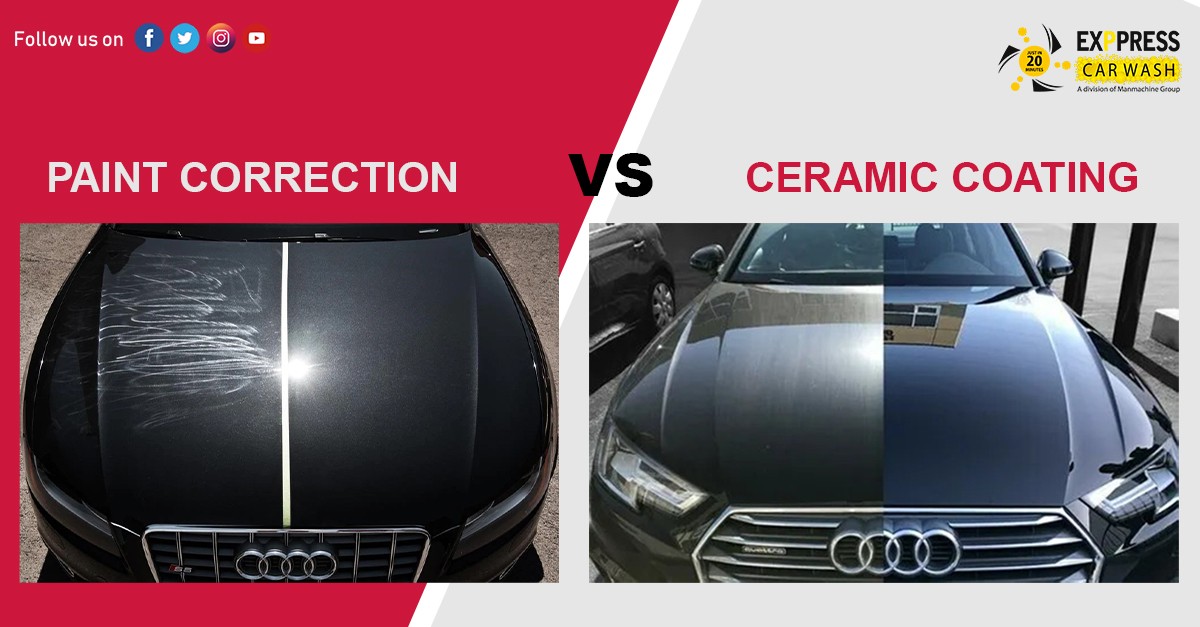Why Ceramic Coating Is Crucial for Maintaining Your Vehicle Looking New
Why Ceramic Coating Is Crucial for Maintaining Your Vehicle Looking New
Blog Article
Checking Out the Scientific Research Behind Ceramic Layer and Its Effect on Car Outlining
The application of ceramic finish in automobile detailing represents a substantial innovation in vehicle treatment, rooted in its advanced chemical homes, mostly silica dioxide and titanium dioxide. As we discover the details of the application procedure and the long-lasting implications for automobile upkeep, it comes to be clear that the choice of ceramic covering can basically alter one's technique to vehicle treatment.
What Is Ceramic Finish?
Ceramic finishing is a modern remedy that has actually acquired popularity in the vehicle outlining industry for its ability to supply durable security for car surface areas. This sophisticated protective layer is commonly made up of silica dioxide (SiO2), which forms a solid bond with the car's paint, creating a long lasting guard against ecological pollutants. Unlike traditional wax or sealers, ceramic finishes provide superior resistance to UV rays, chemical spots, and physical abrasions.
The application of ceramic finishing entails a precise process, where the automobile's surface is thoroughly cleansed and decontaminated before the finish is applied (Ceramic Coating). As soon as cured, the finish enhances the lorry's gloss, deepness, and quality, giving a showroom-quality surface that lasts for years. Among the key benefits of ceramic covering is its hydrophobic buildings, which drive away water and dust, making maintenance much easier and minimizing the frequency of cleans
The Chemistry of Ceramic Covering
A fundamental aspect of ceramic finish hinges on its chemical composition, mainly defined by the existence of silica dioxide (SiO2) This compound is essential to the development of a resilient, protective layer that bonds chemically to the car's surface. When applied, the SiO2 molecules go through a process referred to as polymerization, wherein they form a network of interconnected frameworks. This causes a durable, hydrophobic surface that pushes back water and contaminants.
Along with SiO2, several ceramic layers integrate titanium dioxide (TiO2) and various other additives to boost their efficiency attributes. TiO2, for instance, contributes to increased hardness and chemical resistance. The communication in between these compounds develops an one-of-a-kind molecular structure that uses a high degree of defense versus environmental variables such as UV rays, acid rain, and oxidation.
Additionally, the application procedure frequently entails a careful preparation of the surface area to make sure optimum attachment of the layer. This chemistry not only guarantees a lasting surface yet also enhances the aesthetic charm of the car. Understanding the detailed chemistry behind ceramic finishings is important for outlining specialists that aim to offer superior defense and durability for their clients' automobiles.
Benefits of Ceramic Layer
While detailing specialists commonly highlight the advantages of ceramic layers, their advantages prolong far past aesthetic appeals. Ceramic finishings create a hydrophobic surface that drives away crud, water, and dust, significantly minimizing the regularity of washes and the effort called for to keep a lorry's look.
Furthermore, ceramic coverings enhance the longevity of the car's coating. Unlike resource conventional waxes or sealers, which might last a few months, ceramic finishes can endure for many years, supplying a lasting solution for cars and truck treatment. This resilience translates to cost savings, as owners are less most likely to require regular reapplication.
In addition, ceramic finishes are immune to chemical stains and etching, which can take place from acidic substances like bird droppings or tree sap. This resistance not just protects the automobile's aesthetic appeals however also reduces potential damage - Ceramic Coating. On read the whole, the financial investment in ceramic layer provides automobile owners a considerable return in terms of protection, ease of upkeep, and long-lasting aesthetic allure, making it a significantly popular selection in the realm of automotive detailing
Application Refine Clarified

As soon as the surface area is effectively prepared, the ceramic coating can be used. Making use of an applicator pad, the service technician applies the covering in little sections, functioning in a crosshatch pattern to ensure even protection.
As soon as healed, the ceramic covering creates a solid bond with the paint, providing improved defense and a glossy surface. Correct application is essential to optimize the long life and efficiency of the ceramic finishing.

Lasting Effect on Car Care
The long-term influence of ceramic layer on lorry treatment is substantial, as it essentially alters how proprietors preserve their cars. By creating a resilient, hydrophobic layer on the vehicle's surface area, ceramic finishes reduce the adherence of dirt, crud, and pollutants. This home decreases the frequency of washing called for, eventually conserving water and cleansing items.
Furthermore, the UV protection supplied by ceramic finishes assists to prevent oxidation and fading of the vehicle's paint, protecting its aesthetic allure and resale value over time - Ceramic Coating. This safety barrier likewise decreases the likelihood of scrapes and swirl marks, which prevail concerns in conventional paint finishes
In addition, ceramic finishes assist in easier upkeep, enabling proprietors to clean their vehicles with marginal effort. The smooth surface area makes it difficult for pollutants to bond, enabling easier elimination during routine cleansing.
In the future, the financial investment in ceramic covering weblink might lead to cost financial savings in vehicle treatment services and products. Generally, the sustaining benefits of ceramic finishes not only improve the look of vehicles however additionally contribute to a much more efficient and sustainable approach to automobile upkeep.
Final Thought
Finally, the application of ceramic layer represents a significant innovation in vehicle outlining, driven by its special chemical make-up of silica dioxide and titanium dioxide. This technology not just enhances the aesthetic appeal of cars yet also supplies durable security against ecological hazards and use. The lasting advantages, consisting of lowered maintenance frequency and enhanced toughness, emphasize the worth of ceramic coverings as an essential investment for maintaining automobile appearance and stability in time.

Report this page